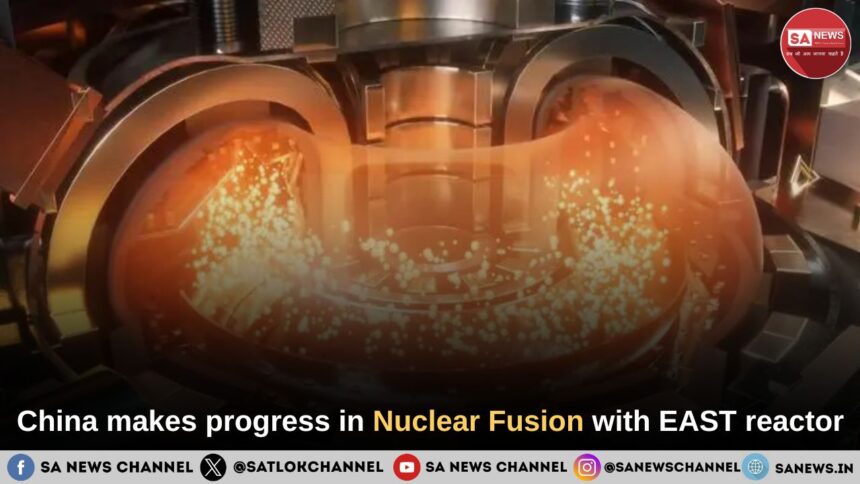China has recently made significant progress in nuclear fusion research. The Advanced Superconducting Tokamak (EAST) has achieved a 1,000-second nuclear fusion test. This surpasses the previous record of 403 seconds set in 2023. This achievement is significant for the future of energy production, paving the way for sustainable power generation.
About Nuclear Fusion
- Nuclear fusion is the process that powers the Sun.
- It involves the fusion of atomic nuclei to release energy.
- Unlike nuclear fission, which splits atoms, fusion produces minimal radioactive waste and no greenhouse gas emissions.
- This makes it an attractive energy source to combat climate change and meet global energy needs.
Importance of Nuclear Fusion
Nuclear fusion is considered the “holy grail” of energy sources. It offers the potential for virtually unlimited energy with minimal environmental impact. As global energy demand grows, fusion could play an important role in meeting these needs while reducing dependence on fossil fuels.
EAST Reactor
- The EAST reactor is often called China’s “artificial sun.”
- It is located at the Institute of Plasma Physics in Hefei.
- The purpose of this reactor is to replicate the nuclear fusion process of the Sun.
- It has been in operation since 2006 and has undergone extensive testing to improve its efficiency and stability.
The Role of Tokamaks
- A tokamak is an experimental device designed to harness fusion energy.
- Inside the tokamak, the fusion energy is absorbed as heat. This heat is used to produce electricity, just like in conventional power plants.
- The EAST reactor is a major player in advancing this technology.
Other fusion projects in China
China operates several other tokamaks, including the HL-2A and J-TEXT. The HL-2M tokamak, the largest and most advanced fusion device in China, was successfully tested in December 2020. These projects contribute to China’s commitment to green growth and sustainable energy.
International Cooperation
China is a member of the International Thermonuclear Experimental Reactor (ITER) project. This cooperation includes countries such as the European Union, Japan, Korea, Russia, and the United States. The ITER facility aims to become the world’s largest nuclear fusion reactor when it becomes operational in 2035, signifying a global effort toward fusion energy.
What Can You Do with Nuclear Fusion?
Ans: Inertial confinement and magnetic confinement.
What Does Fusion Mean?
Ans: Fusion occurs when the nuclei of lighter atoms, such as hydrogen (one proton and one neutron), fuse together to form a new nucleus, releasing energy.
What Is the Fusion Process?
Ans: The conversion of a solid into a liquid state.









